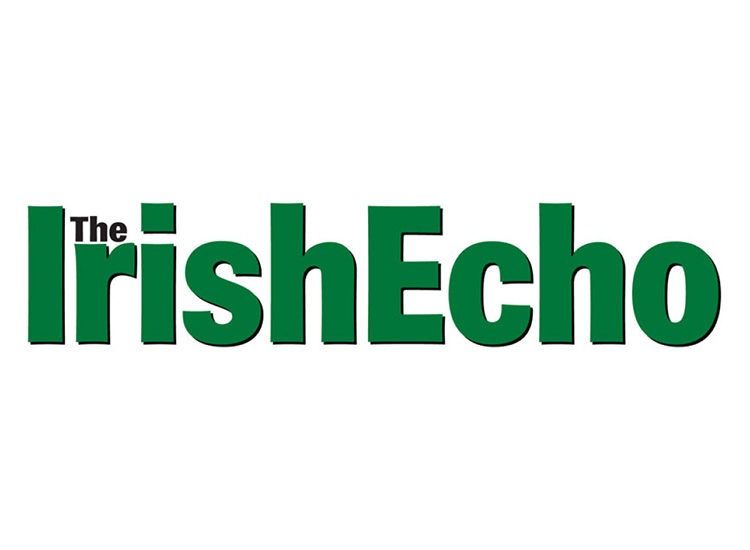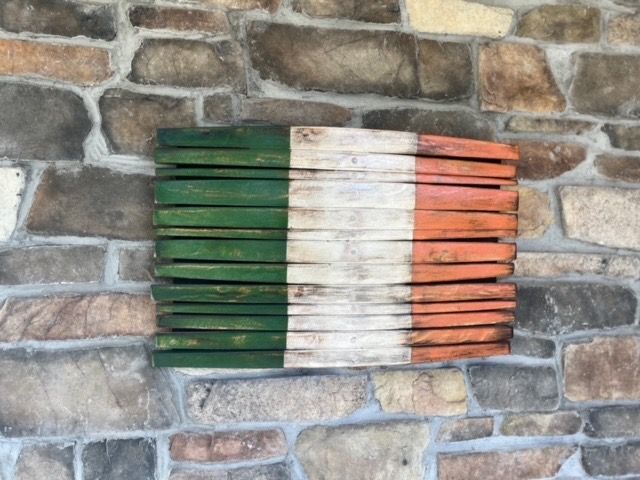Cormac O’Malley.
PHOTO: PETER MCDERMOTT
Page Turner / Edited by Peter McDermott
Over the past 30 years, Irish-born American lawyer Cormac O’Malley said he has “tried to publish and publicize the historical, literary and artistic aspects of my parents’ heritage.”
The 1935 marriage of Helen Huntington Hooker and Ernie O’Malley was on the face of it an unlikely one, apart from their shared passion for the arts. She was a sculptor and the daughter of a wealthy Connecticut businessman, he a former medical student who had fought in the Irish War of Independence and was later a leading commander of the anti-Treaty Irish Republican Army.
The elder O’Malley is today mainly remembered because of the literary quality of his accounts of those wars. His memoir of his life up through 1921, “On Another Man’s Wound," was published in London in 1937 to excellent reviews. When it was issued in this country, the New York Times reviewer described it as a "stirring and beautiful book." In the 1990s, Irish novelist John McGahern wrote that the book "deserves a permanent and honored place in our literature."
Eamon de Valera sent O’Malley to America in 1928 to raise funds for his planned daily paper, the Irish Press. The former guerilla fighter stayed and traveled back and forth to Mexico. The promise of a military pension lured O’Malley back to his homeland, where he and his wife divided their time between Mayo and Dublin. After the marriage failed in the 1940s, Helen took two of their three children to live with her family in America. O’Malley sent Cormac to boarding school in England.
After his father’s death in 1957, Cormac O’Malley joined his mother and the rest of the family in the U.S.
“After college, the US Navy and law school, I worked in private international law on Wall Street and in Mexico for 10 years,” O’Malley said, “followed by 20 years international corporate law living in Europe and New York, and ended with consulting on legal aspects of investments in Ireland.”
Cormac O’Malley
Date of birth: 1942
Place of birth: home Newport, Co Mayo, born in a Dublin hospital
Spouse: Moira Kennedy
Children: Bergin, Conor
Residence: Stonington, Conn.
Published works: Edited letters: “No Surrender Here: The Civil War Papers of Ernie O’Malley, 1922-1924,” edited with Anne Dolan, Lilliput Press, Dublin, 2007; “Broken Landscapes: Selected Letters of Ernie O’Malley, 1924-1957,” edited with Nicholas Allen, Lilliput Press, Dublin, 2011.
Edited revised editions: “On Another Man’s Wound” by Ernie O’Malley - about the Irish struggle for independence from 1916-1921, Mercier Press, 2013. “The Singing Flame “by Ernie O’Malley -about the 1921-1924 Irish Civil War, Mercier Press, 2012. “Raids and Rallies” by Ernie O’Malley - about events during the Irish War of Independence, Mercier Press, 2011. “Rising Out: Sean Connolly of Longford, 1890-1921,” UCD Press, 2007.
Edited Interviews from veterans of 1916-1924 Irish independence struggles: “The Men Will Talk to me: Interviews by Ernie O’Malley” Kerry Interviews, edited with Tom Horgan, Mercier Press, 2012. Galway Interviews, edited with Cormac O Comhrai, Mercier Press, 2013. Mayo Interviews, edited with Vincent Keane, Mercier Press, 2014.
What is your latest book about?
“Western Ways, edited with Christy Barron, published by Mercier Press in 2015, is a book of photographs taken by my parents in Mayo in the 1930s.
My next book to out in 2017 is on Ernie O’Malley’s "Dairies on the Aran Islands, 1941-1956," and thereafter I hope to work on more books of photographs around Ireland and the folklore of Clew Bay, Co. Mayo
What is your writing routine? Are there ideal conditions?
My books are projects and as such there is no regular routine. My ideal would be to work from 8:30 in the morning through early evening with regular tea breaks and lunch. One often forgets the difficulty the second half of the publication process which is the proofreading the manuscript as it is returned several times by the publisher.
What advice do you have for aspiring writers?
Be disciplined about use of time and establish a system for quick retrieval of notes, interviews, research materials and images. This is easier to do now with the new technology available.
Name three books that are memorable in terms of your reading pleasure.
Every time I reread “On Another Man’s Wound” by Ernie O’Malley, I find new and exciting aspects about Ireland, its culture and history. “The Crock of Gold” by James Stephens helped me understand Ireland better. The short stories of Mary Lavin.
What book are you currently reading?
“Jerimiah O’Donovan Rossa: Unrepentant Fenian” by Shanna McKenna. “A Nation and not a Rabble” by Diarmaid Ferriter
Is there a book you wish you had written?
The biographical story of how my parents life together – “Marriage for Arts’ Sake.”
Name a book that you were pleasantly surprised by.
“Granuaile” by Anne Chambers.
If you could meet one author, living or dead, who would it be?
Given the work I have done on my father’s heritage since 1957, I would like to meet him now to talk about his life and his varied interests in art, poetry, drama, art criticism, farming, folklore not to mention his role in Irish military history, not to mention the more personal aspects of family history.
What book changed your life?
“The Fountainhead” by Ayn Rand made me want to be a strong minded independent architect and changed the way I went about my studies, but then I got cured of my architectural ambitions and went into history at college.
What is your favorite spot in Ireland?
Clew Bay, Co Mayo. That bay has so much to offer in terms of mountains, landscape, seascape, islands, sailing, fishing, and in many ways has not yet been urbanized like the rest of Ireland.










